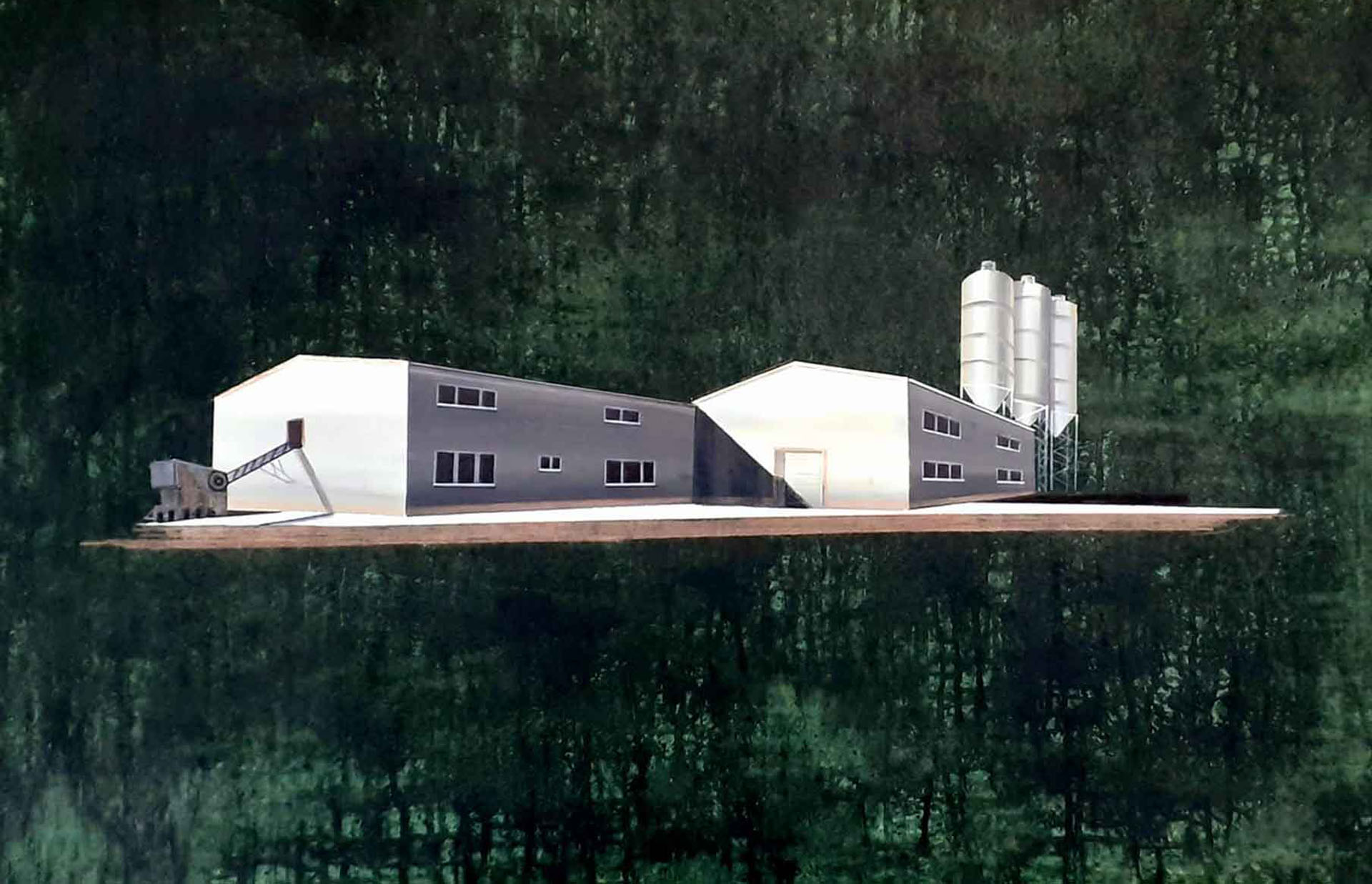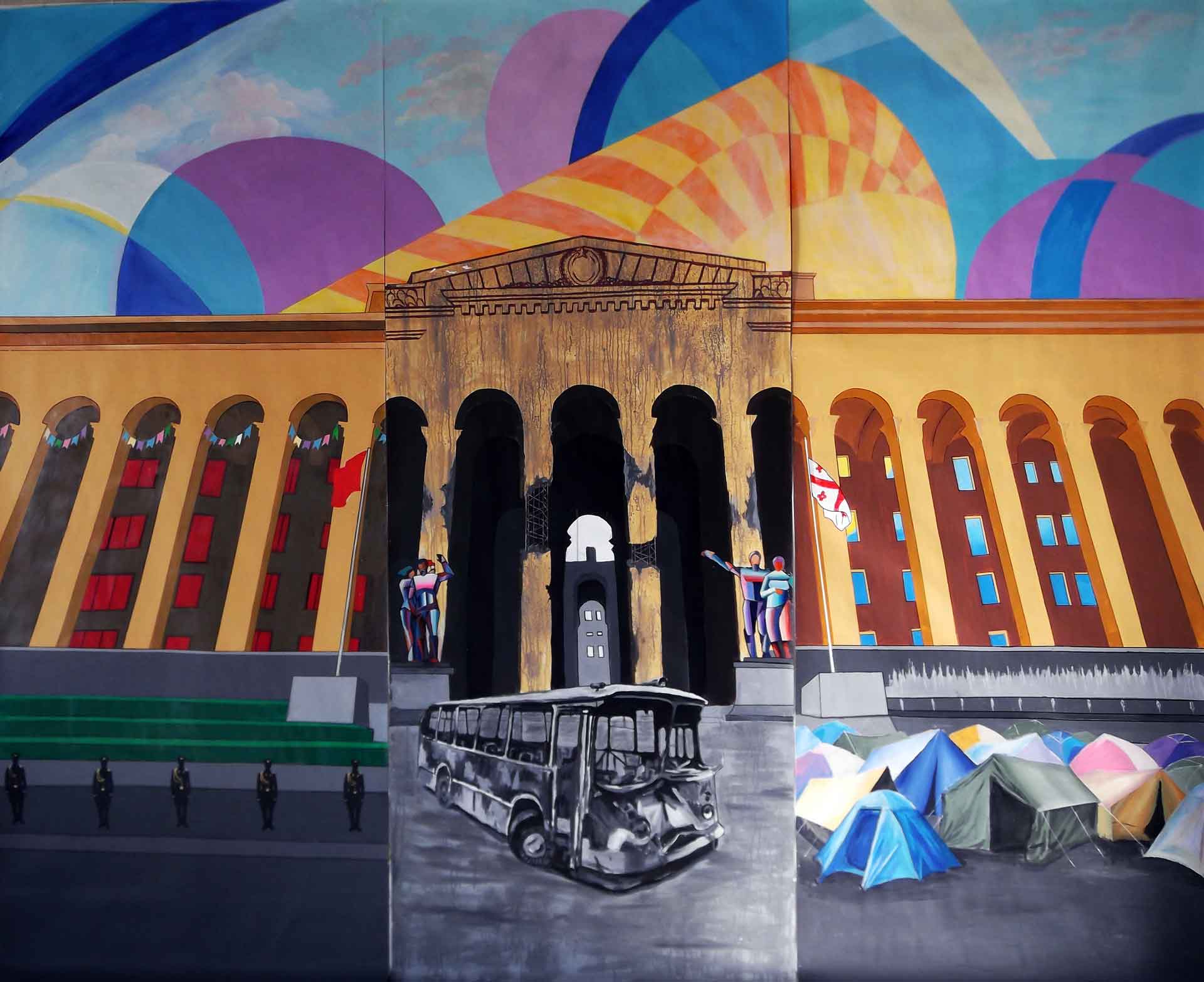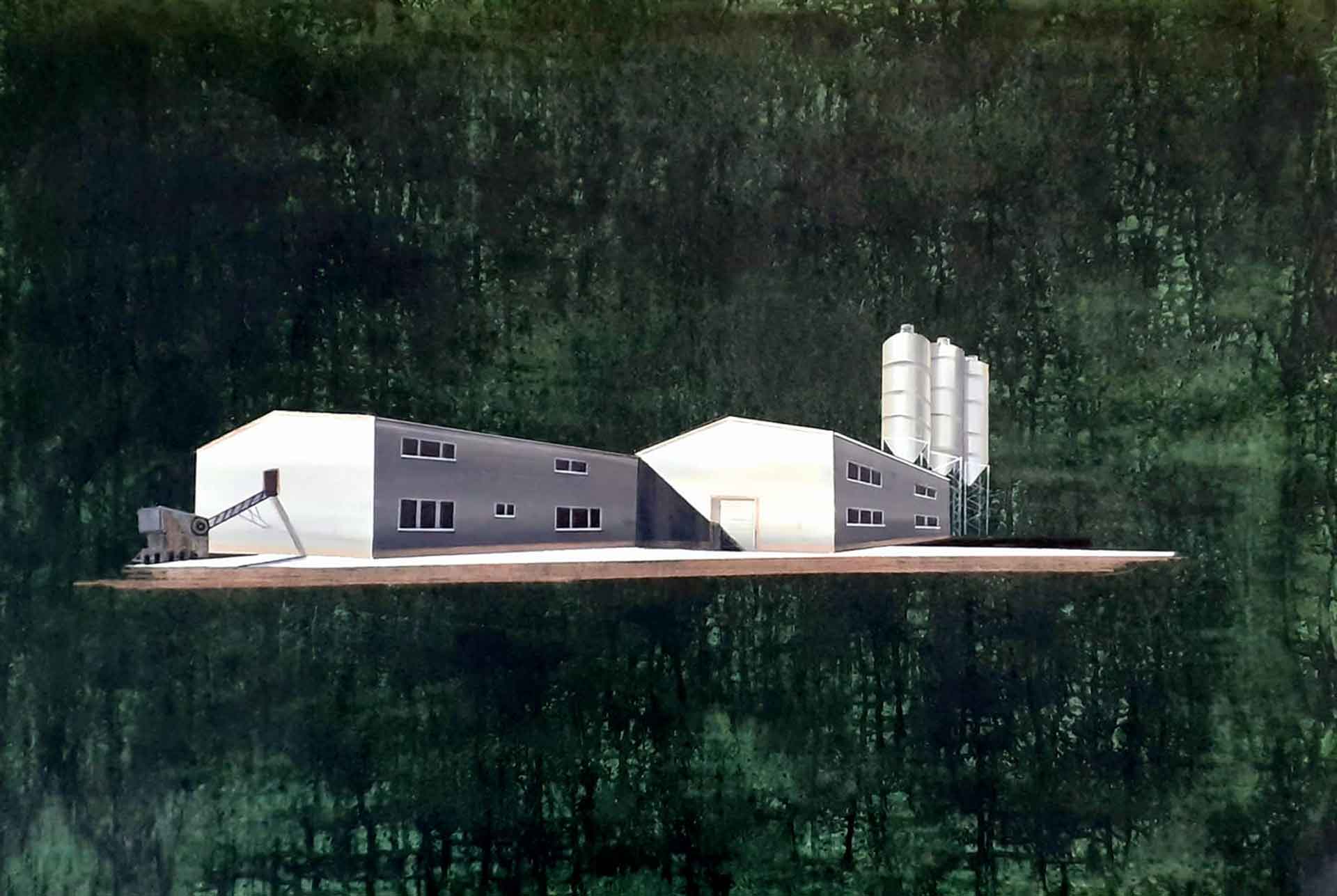
Feel free to add tags, names, dates or anything you are looking for


Architecture in developing countries is an excellent source for absurd content. Dehumanization of bureaucratic labyrinths and cynicism towards power in David Kukhalashvili’s expressive paintings seem to be intended for a new, animated version of The Trial by Kafka. Labyrinths, marked with industrial symbols, appear in the form of towering fortress silhouettes, countless rolls of toilet paper, shopping carts, gargantuan closets with identical hanging costumes, auditorium seats and anonymous clerks, merged under a single roof of a hypermarket. Just like the hypermarket and the industry at large, the system comes together in this massive hallucination that the consumerist society continues to reside in, which is why it naturally manifests itself in the form of Pop-Art traditions.
David Kukhalashvili. Market. Acrylic on Cardbooard. 100X70. 2014
David Kukhalashvili’s oeuvre also incorporates motifs of Surrealism and Funk art, which the artist synthesizes for the purpose of conveying satirical content. He has authored a variety of critical pieces with dual meaning, which are bound to be stripped of their seemingly benevolent appearance, projected through vibrant colors and sharp silhouettes, as soon as the viewer takes a closer look, only to discover the inherently harsh, disparaging and bitterly critical narrative.

David Kukhalashvili. City. Mixed media. 150X130. 2018
What allows him to communicate intrinsic expectations and frustrations that follow throughout his paintings is a variety of original visual alternatives: chaotic infinity of untamed staircases, accompanied by contrasting hints of an alternate reality; adjacent rows of bare backs of nameless crowds; and the contrastive scene featuring a school desk.

David Kukhalashvili. Influence. Acrylic on paper.120X200.2020
His ecology-themed paintings portray fatal consequences of infantilism through series of surreal paradoxes, such as a table tennis board or a fully set long dinner table, permeating a scenic landscape unceremoniously.
The Collector by Kukhalashvili is a central piece of the newly opened exhibit at Dédicace Gallery. Its double-entendre title, primarily associated with the art industry, alludes to the phenomenon of harassment and manipulation exerted on living exhibits.

David Kukhalashvili. The Collector. Acrylic on paper. 120X200.2020
David Kukhalashvili is a member of the On/Off group and an active critic of the system. Artists from this group channel expressive metaphors with vibrant and lively motifs to communicate issues pertaining to the contemporary existential void, struggle for dominance, and commercialization.
From the very onset of his career, even before the group came into being, David Kukhalashvili stood out with distinct ferocity and particular interest towards power dynamics and crowd psychology. Back in 2013, two young curators, Mariam Tsikaridze and Mariam Loria, put together a 90s-themed group show, which aimed to revive the crisis-era setting, shared by participants during their childhood and adolescence years, and to transform these experiences into visual symbols of sorts. The Geo Memory by Davit Kukhalashvili was one of the central pieces of this exhibit. His triptych represented most recent history of Georgia in the form of three concise images, reminiscent of typical propaganda posters: 1. Soviet monument to Lenin on Tbilisi’s central square; 2. Gigantic cannon, pointed towards the viewer, with a demolished building of the former City Hall in the background; and 3. The same exact background on the left-hand side—this time, featuring the new statue of St. George. This rectilinear poster feel of the triptych represents historic nature of the ideological state apparatus, with coloring technique of Lenin’s figure à la Athletes by Malevich serving as an ironic allusion to the original pathos of revolutionary ideas. The hyperbolized cannon at the center of the triptych, with its meticulously detailed engineering parts, is a key symbol of the destructive regime. And the “glamorous” statue, charged with religious symbolism, used as a mechanical replacement of the previous monument, signifies the present.
Kukhalashvili’s triptych is an accurate visual representation of the march of history and inherent drama of the period, which ended up transforming into deeply ingrained childhood memories in the form of hollow icons and the inevitable energy crisis.

David Kukhalashvili. Geo Memory. 300X360.2013
Issues pertaining to the most recent history of Georgia are communicated through an architectural symbol as well: the façade of the Parliament building, which has become a permanent background for social protests and documentary images of the repressive response.

David Kukhalashvili. Rustaveli Avenue. Acrylic on Paper. 300X360.2019
David Kukhalashvili’s paintings depict the reality through traditional methods of portraying the so-called hypermarket system, including duplication, emphasis on surface and superficiality, synthetic textures, digital representations of chromatic colors, anonymous characters and ephemeral electronic images. As noted above, language of architecture is an integral part of his artistic alphabet, manifesting itself through a “post-apocalyptic city” feel and the drama of estranged spaces in an abandoned metropolis.

David Kukhalashvili. Factory. Acrylic on cardboard.100X70.2020
Factory is undeniably one of his best recent pieces—a truly remarkable visual representation of the vast scale of industrialization and commercialization. Here, a contrastingly rational architectural render of an industrial building is juxtaposed against an abstract dark greenish black background with “spontaneously” crafted layers. The building mockup, which appears equally ambiguous and groundless against the unfathomable background, symbolizes relativity and transience of a seemingly steady and manageable system.